- Benefits of Growing Rudbeckia from Seeds
- Cost-effective
- Greater Variety
- Control over the Growing Process
- Opportunity for Learning and Experimentation
- Easily Expand Your Garden
- Satisfaction of Growing from Scratch
- Choosing and Preparing the Right Soil for Rudbeckia
- Soil Requirements for Rudbeckia
- Preparing the Soil for Rudbeckia
- Additional Tips for Soil Preparation
- Essential Steps for Planting Rudbeckia Seeds
- 1. Choose the right time for planting
- 2. Prepare the soil
- 3. Sow the seeds
- 4. Water the seeds
- 5. Provide proper sunlight
- 6. Thin and transplant seedlings
- 7. Mulch and fertilize
- 8. Water and maintain
- Caring for Rudbeckia Plants: Watering and Fertilizing
- Watering
- Fertilizing
- Common Types and Varieties of Rudbeckia
- Dealing with Pests and Diseases in Rudbeckia Plants
- Pests:
- Diseases:
- Harvesting and Preserving Rudbeckia Seeds
- 1. When to Harvest Rudbeckia Seeds
- 2. Harvesting the Seeds
- 3. Cleaning the Seeds
- 4. Storing the Seeds
- Questions and Answers:
- What is rudbeckia?
- How do I grow rudbeckia from seeds?
- What are some popular types and varieties of rudbeckia?
- Can rudbeckia tolerate heat and drought?
- How tall does rudbeckia grow?
- Do rudbeckia plants attract bees and butterflies?
- Videos: How to Grow Rudbeckia from Seed
Discover the beauty and versatility of Rudbeckia, a stunning flowering plant that will add vibrant colors to your garden. Whether you’re a seasoned gardener or a novice, this complete guide will provide you with everything you need to know about growing Rudbeckia from seeds, the different types and varieties available, and how to care for these striking plants.
Rudbeckia, also known as Black-eyed Susans or Coneflowers, are popular choices for any garden due to their eye-catching blooms and ability to attract butterflies and bees. With their yellow or orange petals and dark centers, they can create a visually stunning display that will be the envy of your neighbors.
Growing Rudbeckia from seeds is a rewarding and cost-effective way to add these beautiful flowers to your garden. Whether you choose to start your seeds indoors or sow them directly in your garden, this guide will walk you through each step, ensuring your success in cultivating Rudbeckia plants that will bloom year after year.
When it comes to types and varieties, Rudbeckia offers a wide range of options to suit your personal preference and garden design. From the large and classic Rudbeckia fulgida to the compact and multicolored Rudbeckia hirta, there is a Rudbeckia variety for every garden style.
Whether you are looking to add a burst of color to your flower beds, create a charming cottage garden, or attract pollinators to your yard, this complete guide will provide you with the knowledge and inspiration to cultivate beautiful Rudbeckia plants that will thrive in your garden for years to come.
Benefits of Growing Rudbeckia from Seeds
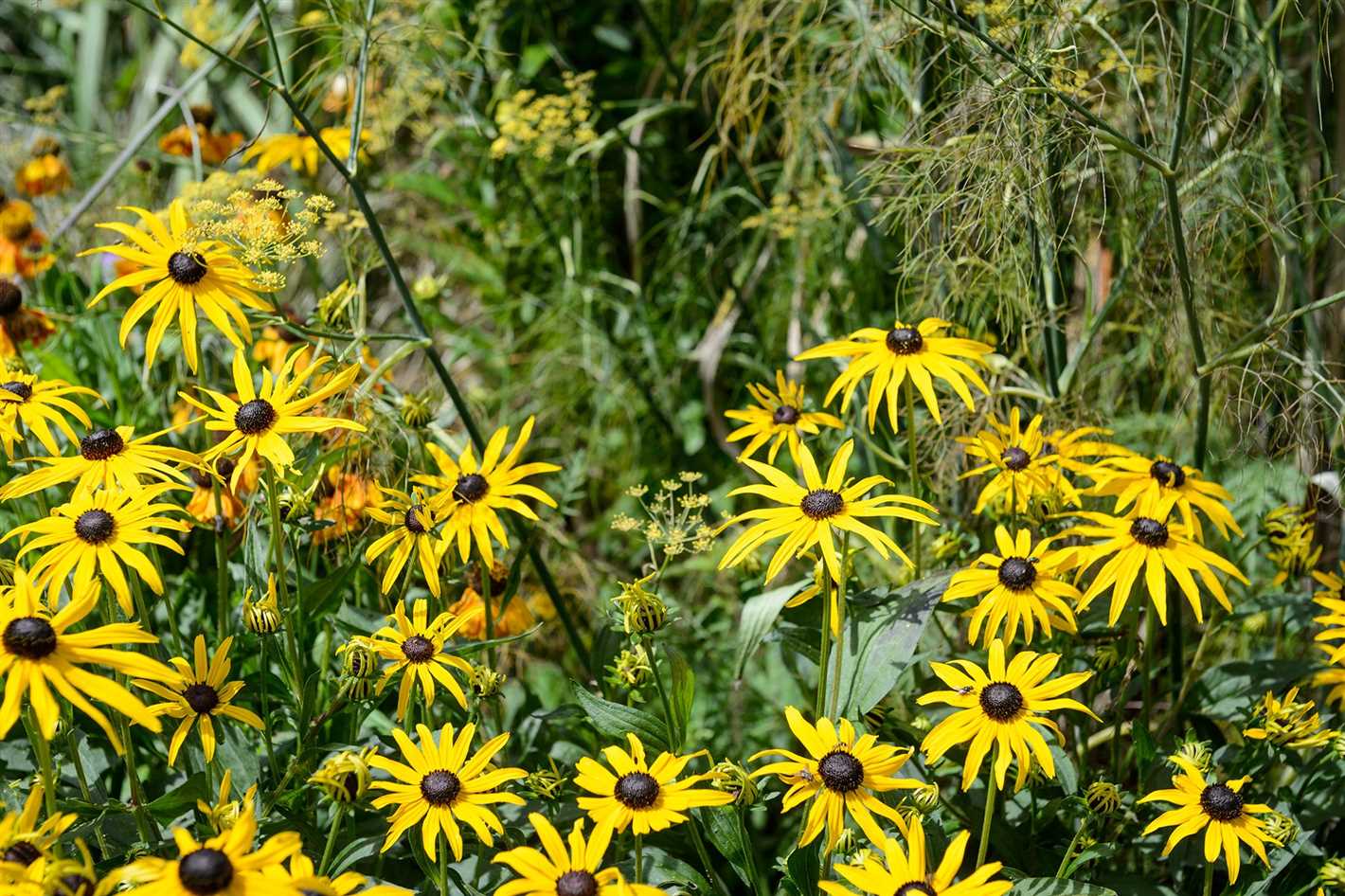
Rudbeckia is a beautiful and versatile flower that can be easily grown from seeds. There are several benefits to starting your rudbeckia plants from seeds instead of buying pre-grown plants.
Cost-effective
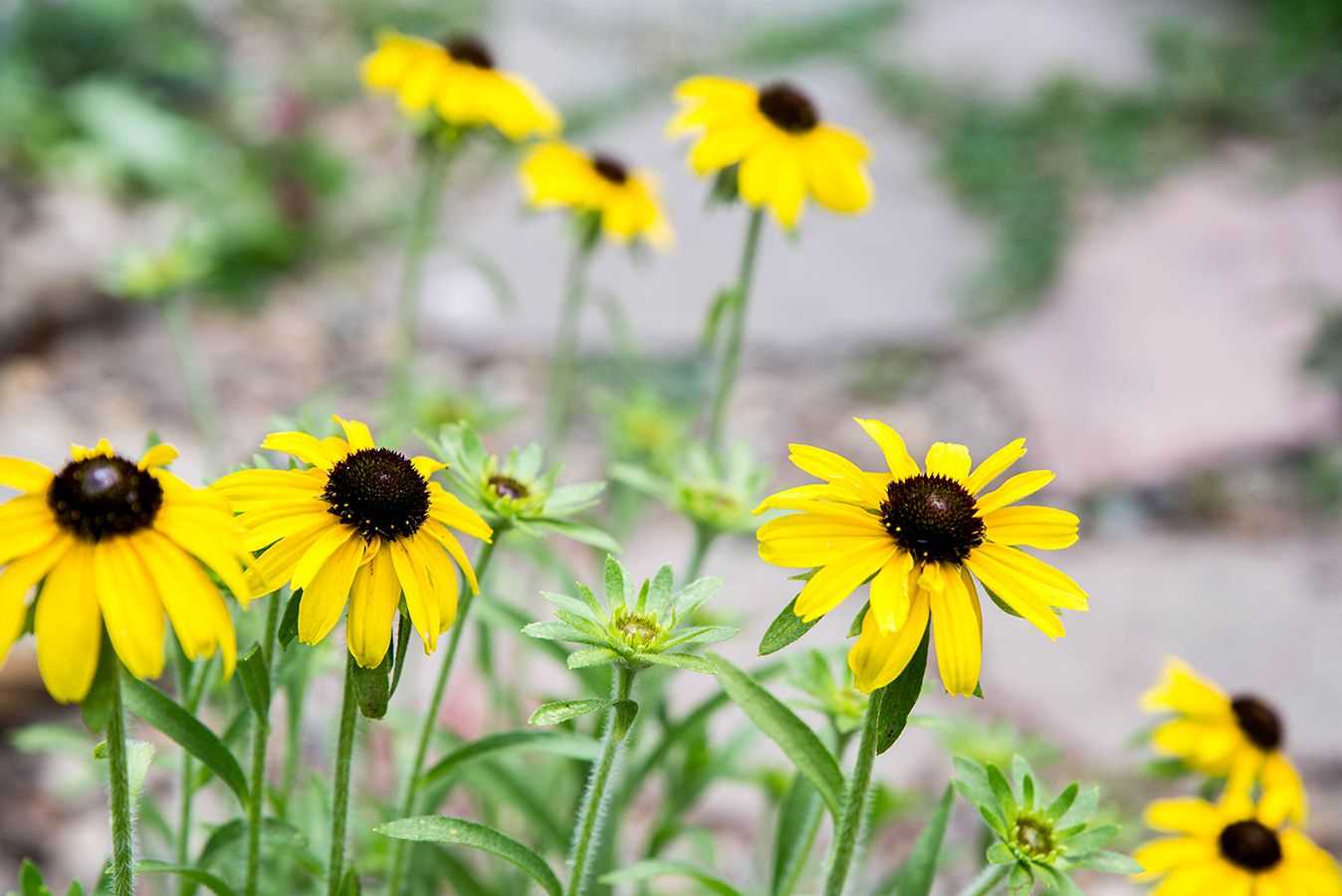
Growing rudbeckia from seeds is a cost-effective way to fill your garden with these vibrant flowers. Seeds are generally much cheaper than pre-grown plants, giving you more bang for your buck. Plus, when you start rudbeckia from seeds, you can grow a larger number of plants for the same price.
Greater Variety
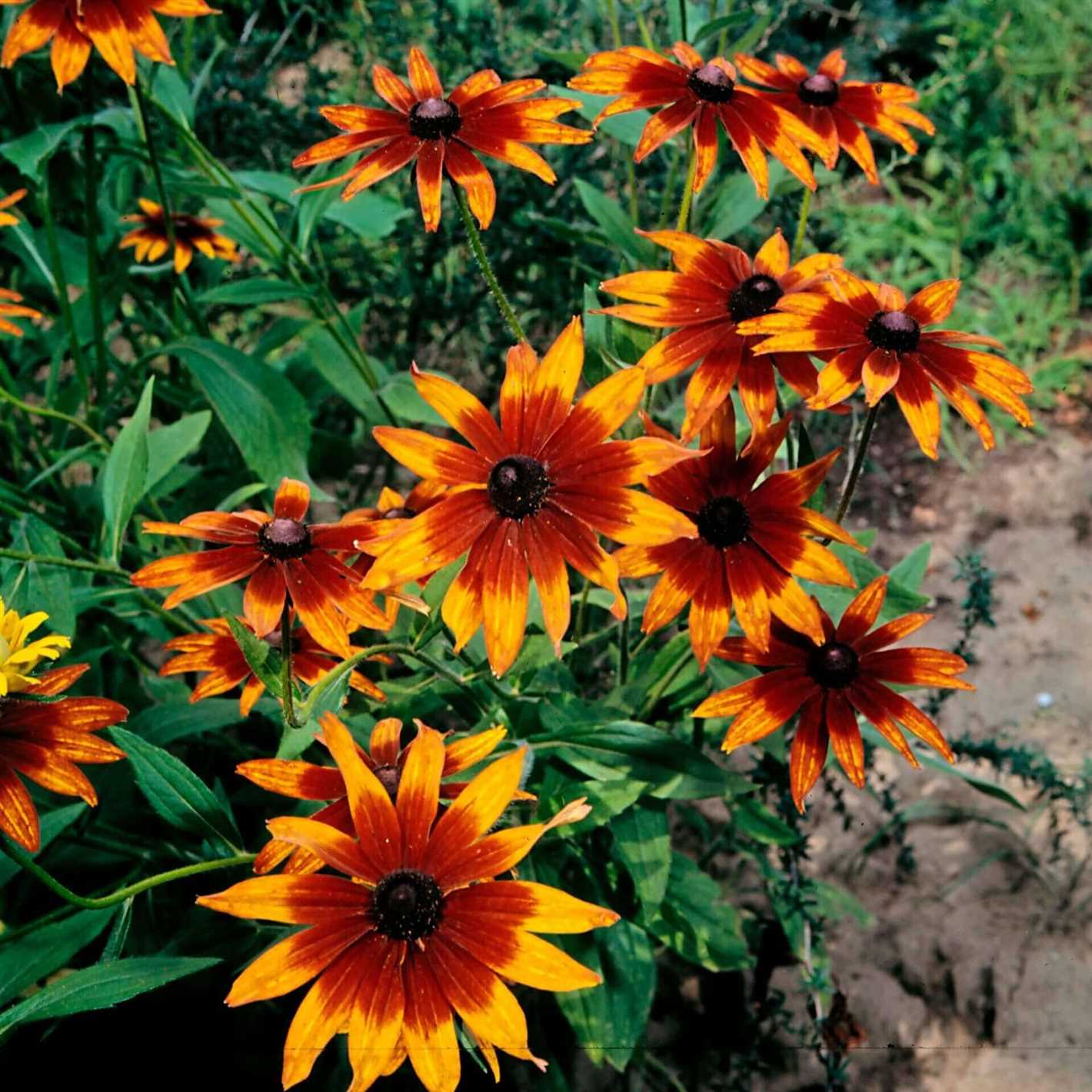
Another advantage of growing rudbeckia from seeds is the wider variety of options available. When you purchase pre-grown plants, you are limited to the selection the nursery offers. However, by starting from seeds, you have access to a broader range of varieties, colors, and forms of rudbeckia.
Control over the Growing Process
When you start rudbeckia from seeds, you have full control over the growing process from start to finish. You can ensure that the seeds are planted in the optimal conditions and care for the seedlings as they sprout. This level of control allows you to tailor the growing process to the specific needs of rudbeckia plants, resulting in healthier and more robust blooms.
Opportunity for Learning and Experimentation
Growing rudbeckia from seeds provides an excellent opportunity for learning and experimentation. Starting from seeds allows you to observe and understand the different stages of the plant’s growth, from germination to flowering. You can also experiment with different growing techniques and see which methods yield the best results for your specific garden and climate.
Easily Expand Your Garden
Starting rudbeckia from seeds allows you to easily expand your garden. Once your seeds have sprouted and grown into healthy plants, you can divide them or transplant them to different areas of your garden. This gives you the ability to create larger displays of rudbeckia or fill in bare spots in your existing garden beds.
Satisfaction of Growing from Scratch
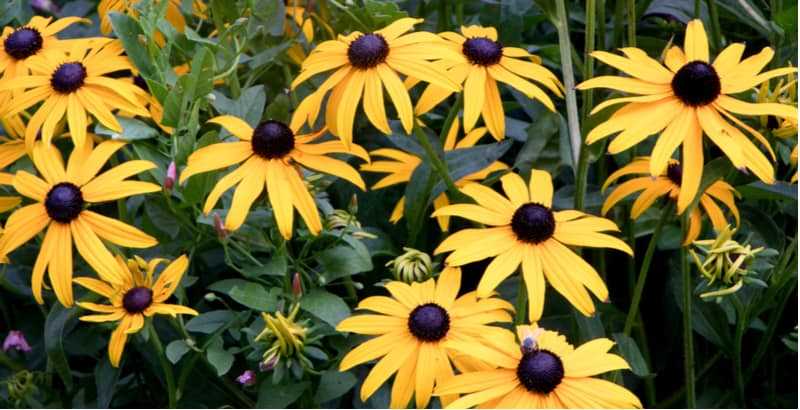
Perhaps one of the most rewarding benefits of growing rudbeckia from seeds is the satisfaction of watching the entire process unfold. From planting the tiny seeds to seeing them grow into beautiful flowers, the journey from seed to plant is incredibly fulfilling. It’s a wonderful feeling to know that you had a hand in every step of the plant’s growth.
Overall, growing rudbeckia from seeds offers numerous benefits, ranging from cost-effectiveness to a broader range of varieties. It also allows for greater control over the growing process, provides opportunities for learning and experimentation, and makes it easy to expand your garden. Additionally, starting from seeds offers a sense of satisfaction and connection to the plants that you simply can’t get from buying pre-grown plants.
Choosing and Preparing the Right Soil for Rudbeckia
Rudbeckias are versatile plants that can adapt to a variety of soil conditions, but they thrive in well-draining soil that is rich in organic matter. Choosing and preparing the right soil for your Rudbeckias is essential to ensure their healthy growth and vibrant blooms.
Soil Requirements for Rudbeckia
- Well-draining soil: Rudbeckias prefer soil that drains well, as they are susceptible to root rot in overly wet conditions. Avoid clay or compacted soils that retain excessive moisture.
- Rich in organic matter: Amend the soil with organic matter, such as compost or aged manure, to improve its fertility, moisture retention, and drainage.
- Neutral to slightly acidic pH: Rudbeckias generally prefer soil with a pH range of 6.0 to 7.0. Use a soil testing kit to determine the pH of your soil and amend it accordingly.
Preparing the Soil for Rudbeckia
Before planting Rudbeckias, it’s important to prepare the soil properly to create the optimum growing conditions. Follow these steps to ensure your Rudbeckias have the best start:
- Clear the area: Remove any weeds, rocks, or debris from the planting area to provide a clean and clear space for your Rudbeckias.
- Loosen the soil: Use a garden fork or tiller to loosen the soil to a depth of at least 8 to 10 inches. This will help improve aeration, drainage, and root penetration.
- Amend the soil: Incorporate organic matter, such as compost or aged manure, into the soil to improve its fertility and moisture retention. Add the organic matter at a rate of 2 to 3 inches and mix it thoroughly with the existing soil.
- Level the soil: Smooth and level the soil surface using a rake to create a uniform planting bed.
Additional Tips for Soil Preparation
Consider the following tips to further enhance the soil conditions for your Rudbeckias:
- Ensure proper drainage: If your soil retains excessive moisture, consider creating raised beds or incorporating perlite or sand to improve drainage.
- Test the soil: Conduct a soil test to determine the nutrient levels and pH of your soil. Based on the results, adjust the soil fertility and pH as needed using organic or synthetic fertilizers and soil amendments.
- Mulch the soil: After planting, apply a layer of organic mulch, such as straw or shredded bark, around the Rudbeckia plants to help conserve moisture, suppress weeds, and regulate soil temperature.
By choosing and preparing the right soil for your Rudbeckias, you can provide them with a favorable growing environment that will promote their overall health and vigor.
Essential Steps for Planting Rudbeckia Seeds
Planting rudbeckia seeds is a simple process that can be done by following a few essential steps. Whether you are a beginner or an experienced gardener, these steps will help you successfully grow vibrant rudbeckia flowers.
1. Choose the right time for planting
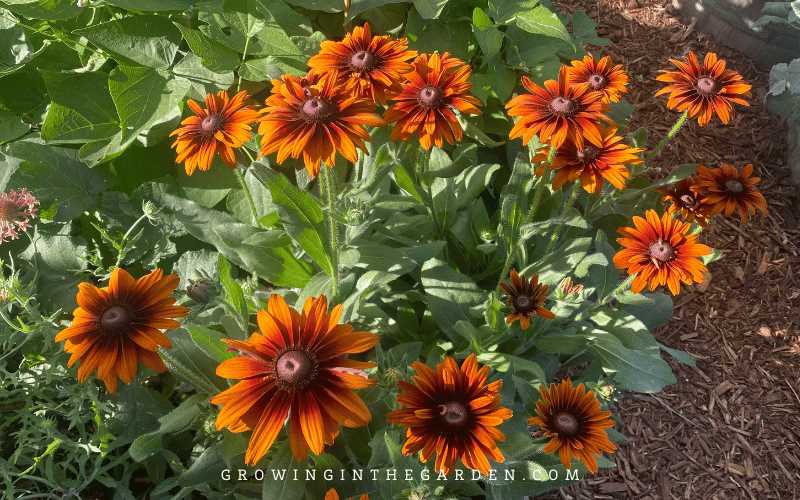
Rudbeckia seeds can be planted either in the early spring or in the fall. If you choose to plant in the spring, make sure to wait until after the last frost date for your area. If planting in the fall, it is best to do so at least two months before the first fall frost.
2. Prepare the soil
Rudbeckia seeds prefer well-drained soil with a pH level between 5.8 and 7.0. Before planting, loosen the soil with a garden fork or tiller. Remove any weeds, rocks, or debris from the planting area.
3. Sow the seeds
Sow the rudbeckia seeds directly into the prepared soil. Scatter the seeds evenly over the planting area. It is recommended to plant multiple seeds in one location to ensure germination. Lightly cover the seeds with a thin layer of soil, about 1/8 inch deep.
4. Water the seeds
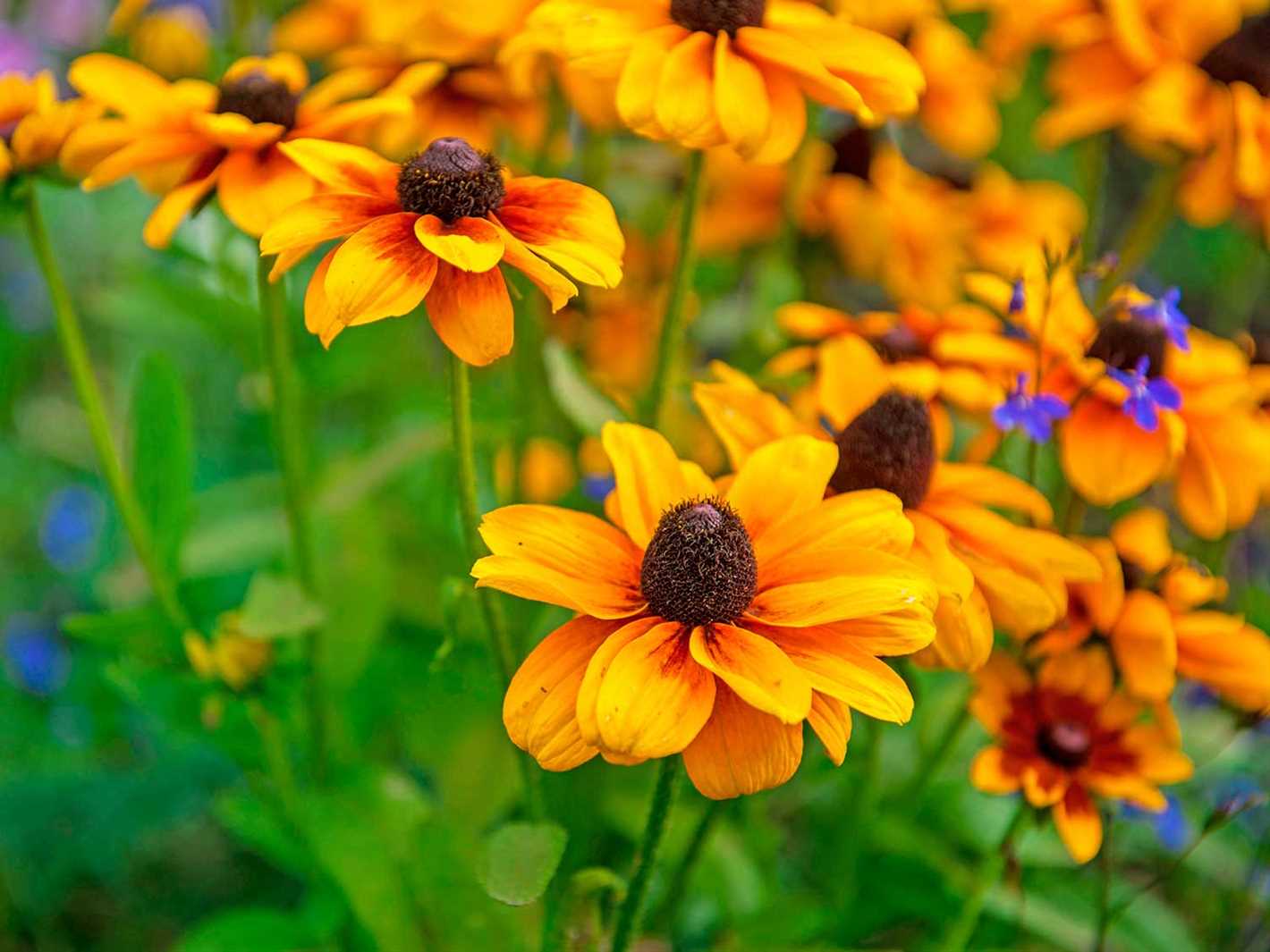
After sowing the seeds, gently water the planting area. Keep the soil moist, but not saturated, throughout the germination period. Regularly check the moisture level and water as needed to provide a consistent growing environment for the seeds.
5. Provide proper sunlight
Rudbeckia plants require full sun to thrive. Choose a location that receives at least six to eight hours of direct sunlight each day. If necessary, remove any nearby plants or obstacles that may shade the rudbeckia plants.
6. Thin and transplant seedlings
As the rudbeckia seedlings grow, they will need to be thinned to provide enough space for each plant to develop fully. Thin the seedlings by removing the weaker or overcrowded ones, leaving the strongest and healthiest ones in place. Transplant the thinned seedlings to other areas of the garden if desired.
7. Mulch and fertilize
Apply a layer of organic mulch, such as straw or wood chips, around the rudbeckia plants to help retain moisture and suppress weed growth. Additionally, fertilize the plants with a balanced, slow-release fertilizer according to package instructions. This will provide the necessary nutrients for healthy growth.
8. Water and maintain
Continue to water the rudbeckia plants regularly, providing about 1 inch of water per week. Monitor for any signs of pests or diseases and take appropriate action to prevent damage. Deadhead the faded flowers to encourage new blooms and promote prolonged flowering.
By following these essential steps, you will be able to successfully plant rudbeckia seeds and enjoy their beautiful flowers throughout the growing season.
Caring for Rudbeckia Plants: Watering and Fertilizing
Proper care is essential to ensure the healthy growth and blooming of Rudbeckia plants. Two key aspects of caring for these plants are watering and fertilizing.
Watering
Rudbeckia plants require regular watering, especially during dry spells or hot weather. However, it is crucial not to overwater them as they are susceptible to root rot. Here are some watering tips for Rudbeckia plants:
- Water the plants deeply once a week, providing enough moisture to penetrate the soil to a depth of at least 6 inches.
- Monitor the soil moisture levels and adjust watering frequency based on the weather conditions and the plant’s needs.
- Avoid overhead watering, as it can lead to foliar diseases. Instead, direct the water to the base of the plant.
- Consider using a drip or soaker hose to provide a slow and steady supply of water directly to the root zone.
Fertilizing
Fertilizing Rudbeckia plants helps to provide them with essential nutrients for healthy growth and robust blooming. Here are some tips for fertilizing Rudbeckia plants:
- Apply a balanced slow-release granular fertilizer in the spring when new growth appears. Follow the instructions on the fertilizer package for the appropriate application rates.
- Alternatively, use a liquid fertilizer diluted with water and apply it every two to three weeks during the growing season.
- Avoid over-fertilizing, as it can lead to excessive vegetative growth and fewer blooms.
- Consider using an organic fertilizer to promote long-term soil health and sustainability.
By following these watering and fertilizing tips, you can ensure that your Rudbeckia plants thrive and reward you with vibrant blooms throughout the growing season.
Common Types and Varieties of Rudbeckia
Rudbeckia hirta: Also known as Black-eyed Susan, this is the most common type of Rudbeckia. It has vibrant yellow petals with a dark brown or black center. It grows up to 3 feet tall and blooms from summer to fall.
Rudbeckia fulgida: The varieties in this group, including ‘Goldsturm’ and ‘Viette’s Little Suzy’, are popular for their large, gold-colored flowers. They are perennial plants that thrive in full sun and well-drained soil.
Rudbeckia hirta ‘Indian Summer’: This variety is known for its large and showy flowers, which can reach up to 6 inches in diameter. The petals are a vibrant mix of orange and yellow, and they bloom from summer to fall.
Rudbeckia laciniata: Also known as Cutleaf Coneflower, this variety has deeply lobed leaves and tall, yellow flowers. It can grow up to 8 feet tall, making it a dramatic addition to a garden or landscape.
These are just a few examples of the many types and varieties of Rudbeckia available to gardeners. Each variety has its own unique characteristics and requirements, so be sure to research the specific needs of the variety you choose before planting.
Whether you opt for the classic Black-eyed Susan or choose a more unique variety, Rudbeckia is a versatile and beautiful addition to any garden. Its cheerful, daisy-like blooms will brighten up your landscape and attract butterflies and pollinators.
Dealing with Pests and Diseases in Rudbeckia Plants
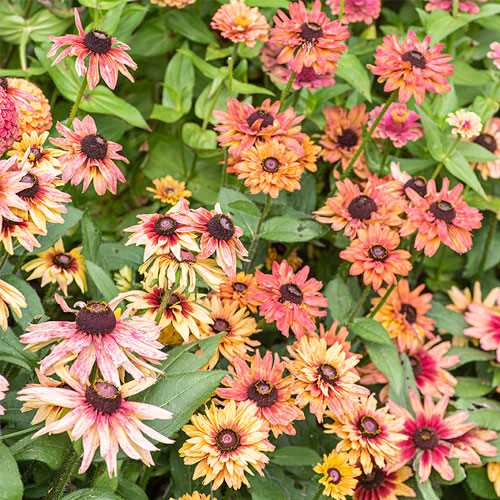
Rudbeckia plants are generally hardy and resistant to most pests and diseases. However, they can still be susceptible to certain problems. Here are some common pests and diseases that can affect Rudbeckia plants and how to deal with them:
Pests:
- Aphids: These tiny insects can suck the sap from Rudbeckia plants, causing stunted growth and distorted flowers. To control aphids, you can spray the plants with a strong stream of water or use insecticidal soap.
- Slugs and Snails: These slimy creatures can munch on the leaves and flowers of Rudbeckia plants, leaving behind holes and damage. To prevent slug and snail damage, you can handpick them off the plants or use organic slug pellets.
- Spider Mites: These tiny insects can cause yellowing and stippling on the leaves of Rudbeckia plants. To control spider mites, you can wash the leaves with water or use insecticidal soap.
- Japanese Beetles: These beetles can skeletonize the leaves of Rudbeckia plants. Handpicking them off the plants or using insecticides labeled for Japanese beetles can help control their population.
Diseases:
- Powdery Mildew: This fungal disease appears as a white powdery coating on the leaves of Rudbeckia plants. To control powdery mildew, you can spray the plants with a fungicide labeled for powdery mildew or use a homemade solution of baking soda and water.
- Root Rot: Excessive moisture and poorly-drained soil can lead to root rot in Rudbeckia plants. To prevent root rot, make sure the plants are placed in well-drained soil and avoid overwatering.
- Leaf Spot: This fungal disease causes dark spots or lesions on the leaves of Rudbeckia plants. To control leaf spot, you can remove and destroy infected leaves and apply a fungicide labeled for leaf spot.
- Botrytis Blight: This fungal disease causes brown spots and rotting on the flowers of Rudbeckia plants. To control botrytis blight, you can remove and destroy infected flowers and improve air circulation around the plants.
Regularly inspecting your Rudbeckia plants for pests and diseases and taking prompt action can help keep them healthy and thriving. Proper care, including providing adequate sunlight, water, and nutrients, can also help prevent pest and disease problems in Rudbeckia plants.
Harvesting and Preserving Rudbeckia Seeds
Harvesting and preserving rudbeckia seeds is a simple and rewarding process. By collecting and properly storing the seeds, you can ensure a steady supply of these stunning flowers for years to come. Here are the steps to follow:
1. When to Harvest Rudbeckia Seeds
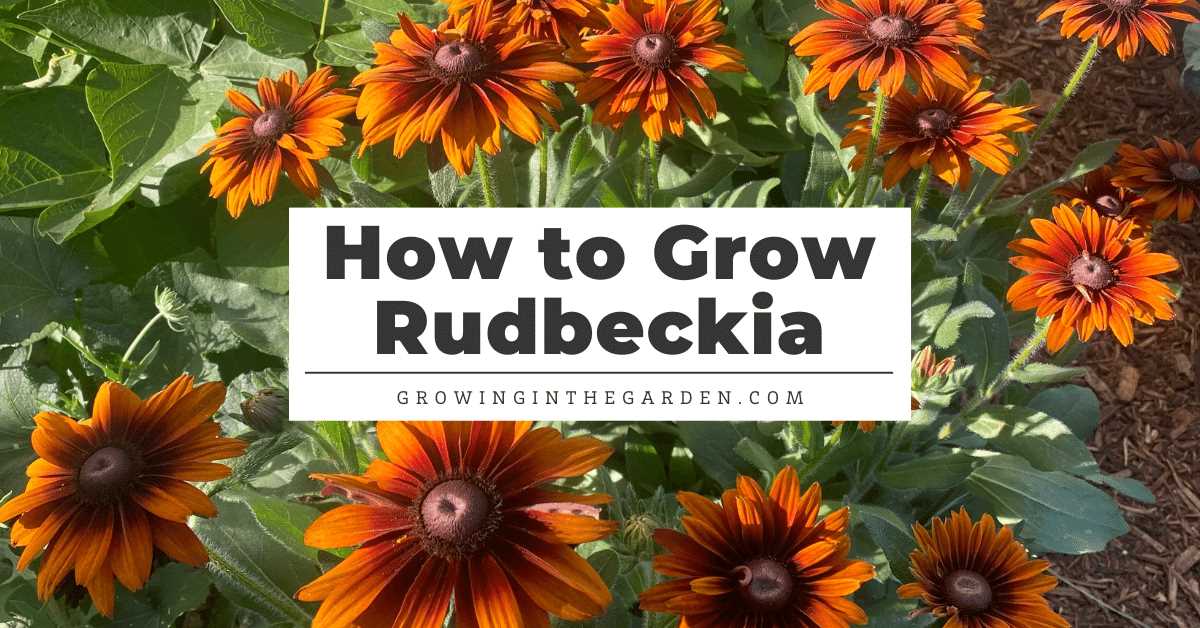
Rudbeckia seeds are ready to be harvested once the flower heads have dried on the plant. The petals will have fallen away, and the center cone will be starting to turn brown. This usually occurs in late summer or early fall. Choose a dry day to harvest the seeds.
2. Harvesting the Seeds
Hold a container, such as a paper bag or a plastic bag, under the dried flower head. Use your fingers or a pair of scissors to cut the stem just below the base of the flower head. Gently shake the flower head over the container to release the seeds. Keep in mind that rudbeckia seeds are small, so be careful not to drop them.
3. Cleaning the Seeds
Once you have collected the seeds, it’s important to remove any remaining debris. Place the seeds in a fine-mesh sieve or strainer and rinse them under running water. Gently shake the sieve to remove excess water, then spread the seeds out on a clean towel or paper plate to dry.
4. Storing the Seeds
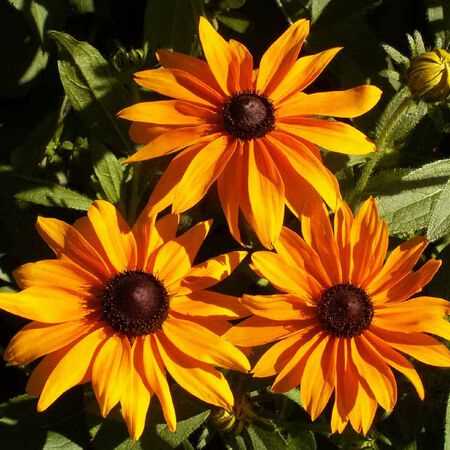
After the seeds have dried completely, transfer them to a clean, dry container such as a paper envelope or a glass jar with a tight-fitting lid. Be sure to label the container with the name and date of the seeds. Store the container in a cool, dry place away from direct sunlight.
Rudbeckia seeds can remain viable for several years if stored properly. To test the viability of the seeds, you can perform a germination test by planting a few seeds in a pot of well-draining soil and keeping them moist. If the seeds sprout within a couple of weeks, they are still viable.
Following these steps will ensure that you have a constant supply of rudbeckia seeds for future planting. Enjoy the vibrant and cheerful blooms of these beautiful flowers in your garden year after year!
Questions and Answers:
What is rudbeckia?
Rudbeckia is a type of flowering plant that belongs to the sunflower family. It is known for its beautiful yellow or orange petals and dark brown center.
How do I grow rudbeckia from seeds?
To grow rudbeckia from seeds, you can start by planting the seeds indoors in early spring or directly in the garden in late spring. Sow the seeds in well-drained soil and keep them moist until they germinate. Transplant the seedlings into the garden after the last frost has passed.
What are some popular types and varieties of rudbeckia?
There are several popular types and varieties of rudbeckia. Some of the most popular ones include Rudbeckia fulgida, Rudbeckia hirta, Rudbeckia laciniata, and Rudbeckia triloba. Each variety has its own unique characteristics and can add a touch of beauty to any garden.
Can rudbeckia tolerate heat and drought?
Yes, rudbeckia is known for its ability to tolerate heat and drought. It is a hardy plant that can withstand hot and dry conditions, making it a great choice for gardens in warmer climates. However, it is important to provide adequate water to rudbeckia during periods of extreme drought to ensure its survival.
How tall does rudbeckia grow?
The height of rudbeckia can vary depending on the variety and growing conditions. On average, rudbeckia plants can grow anywhere from 1 to 3 feet tall. Some varieties, such as Rudbeckia laciniata, can reach heights of up to 5 feet.
Do rudbeckia plants attract bees and butterflies?
Yes, rudbeckia plants are known for attracting bees and butterflies. The bright yellow or orange petals of the flowers are appealing to these pollinators, making rudbeckia a great addition to any garden or landscape that aims to support pollinator populations.







